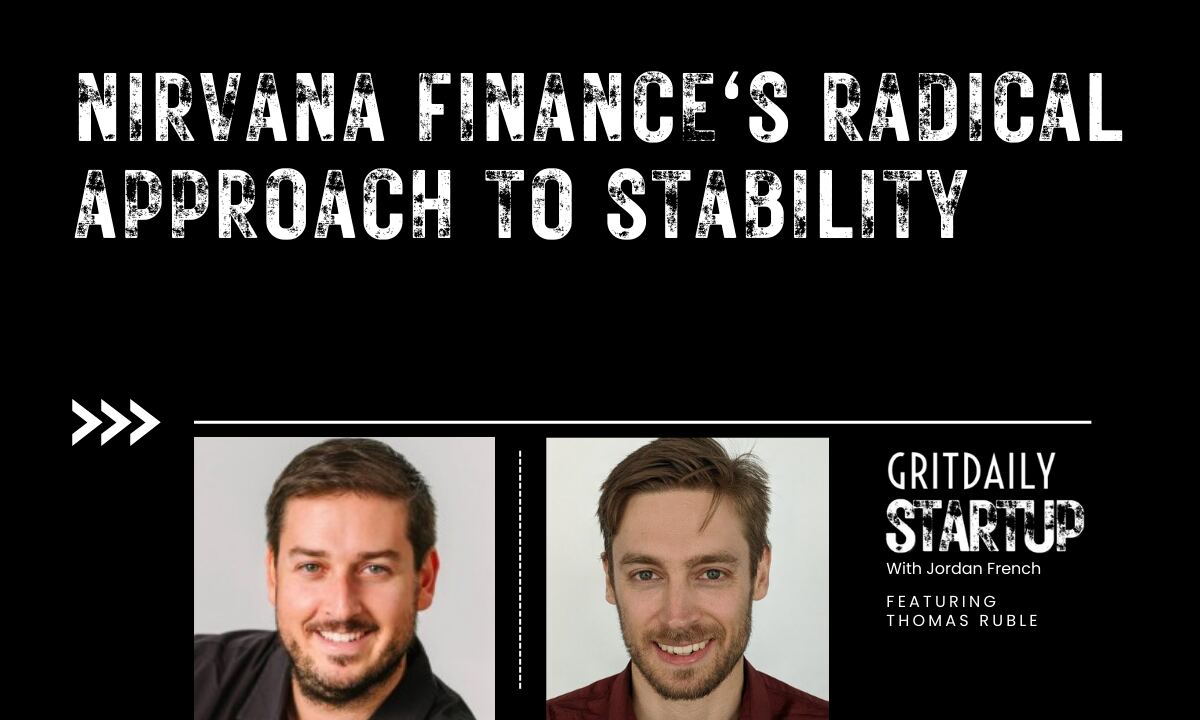The cryptocurrency market has long been synonymous with volatility, speculation, and, too often, instability. Bitcoin, the original digital asset, was designed as a decentralized alternative to traditional finance, yet over time, it has become subject to the same forces of market manipulation and institutional influence that it sought to eliminate.
Enter Nirvana Finance, a new player in the space with a bold proposition: an algorithmic asset that removes human interference, providing a self-sustaining financial instrument. At the helm is Thomas Ruble, a software engineer turned crypto innovator who is rethinking the very structure of digital assets.
From Academia to Algorithmic Finance
Thomas Ruble’s journey into the world of cryptocurrency is far from the typical tech entrepreneur’s story, with a philosophical twist. Originally on track for a career in academia with a focus on philosophy, he pivoted to software engineering, a shift that ultimately led him into the blockchain space.
After stints at healthcare AI startups, major banks, and even Google’s cloud infrastructure division, he was drawn to the promise of decentralized applications. The allure was simple: the ability to build and deploy software that operates autonomously, free from the bureaucratic bottlenecks of traditional corporate environments.
Ruble was particularly intrigued by Bitcoin’s core concept of a financial ledger free from centralized control. However, he quickly recognized that while Bitcoin had decentralized record-keeping, it hadn’t achieved true decentralization in how it was traded and valued. With Nirvana Finance, he sought to take the next step, creating a cryptocurrency that follows immutable rules, ensuring fair access and price stability without the typical vulnerabilities of market speculation.
The Problem with Bitcoin’s Market Dynamics
Bitcoin’s technological foundation is built on transparency and immutability, yet its market behavior mirrors traditional financial instruments, rife with speculative bubbles and the influence of large stakeholders. The presence of major institutional holders — whether hedge funds, corporate treasuries, or high-net-worth individuals — creates a centralized risk factor in what should be a decentralized system. This means that Bitcoin, for all its technological innovation, is still susceptible to manipulation, price swings, and liquidity crises.
Ruble’s critique of Bitcoin’s economic structure is sharp: the asset has strayed from its original purpose. The market around it has evolved into a playground for institutional actors, where price movements are dictated more by external speculation than by intrinsic crypto principles. This observation became the foundation for Nirvana Finance’s approach to creating a truly decentralized asset.
The Nirvana Finance Approach: An Algorithmic Market Maker
What sets Nirvana Finance apart is its method of price determination. Unlike traditional assets, where supply and demand dictate value with the interference of market makers and institutional actors, Nirvana operates through a programmed algorithm. This system ensures that price adjustments happen automatically based on a mathematical function rather than the whims of traders or financial institutions.
The key innovation of Nirvana Finance is its self-regulating price floor. Unlike Bitcoin, which can theoretically drop to zero, Nirvana’s algorithm reserves a portion of its capital to provide an absolute minimum price. This reserve acts as a safety net, ensuring that in a mass sell-off scenario, the asset still retains guaranteed value. By automating the treasury management process and eliminating human intervention, Nirvana avoids the pitfalls that have led to the downfall of many crypto projects — fraud, mismanagement, and over-leverage.
The Potential for Widespread Adoption
Nirvana Finance isn’t designed as just another speculative crypto asset. Its structure positions it as a viable option for large-scale financial operations, including government treasuries and institutional investors seeking a decentralized yet stable store of value. The project echoes Bitcoin’s early days, where adoption was slow but steadily growing, driven by those who believed in its fundamental philosophy rather than short-term gains.
Ruble envisions Nirvana not just as a speculative asset but as a foundational component of a new financial paradigm. He emphasizes that the asset’s success relies on broad distribution rather than concentrated ownership. A decentralized financial tool is strongest when its holders are many and diverse, reducing systemic risk and making it resilient against manipulation.
A New Model for Crypto Finance
The rise of Nirvana Finance signals a potential turning point for cryptocurrency. If Bitcoin was the first revolution in decentralized finance, Ruble’s work could represent the next step — one where crypto assets operate not just on decentralized networks but within decentralized market structures as well. By removing human intervention from price action, Nirvana offers an asset that is transparent, predictable, and resistant to the speculative forces that have historically plagued the industry.
As adoption grows, the crypto world will be watching to see if Nirvana’s model can deliver on its promise. If successful, it could redefine how digital assets function and offer a blueprint for future developments in decentralized finance. And for Thomas Ruble, that’s precisely the point — to build something that operates beyond its creators, standing as a testament to the original ideals of cryptocurrency.
Want more Grit Daily Startup Show? Take a look at past articles, head over to YouTube, or listen on Apple Podcasts or Spotify.

